In what was a pivotal matchday three for the four sides in Group B, the United States were able to overcome a staunch Iran defence and win 1-0, progressing to the round of 16 as a result, and setting up a match against Group A winners the Netherlands on Saturday afternoon.
Going into this match, the United States knew that only a win would allow them to progress to the knockout stages, while Iran knew that anything but a loss and they progressed. As expected, the United States started the match on the front foot, with them pushing for a goal from the first whistle. On the other hand, Iran sat in a deep low block, absorbing pressure and looking to hit the Americans on the counter.
As a result of these two different strategies, this became a very interesting tactical battle between Carlos Queiroz and Gregg Berhalter. This tactical analysis will dive into some of these tactics in more detail while highlighting why Berhalter got the upper hand on his managerial counterpart.
Lineups
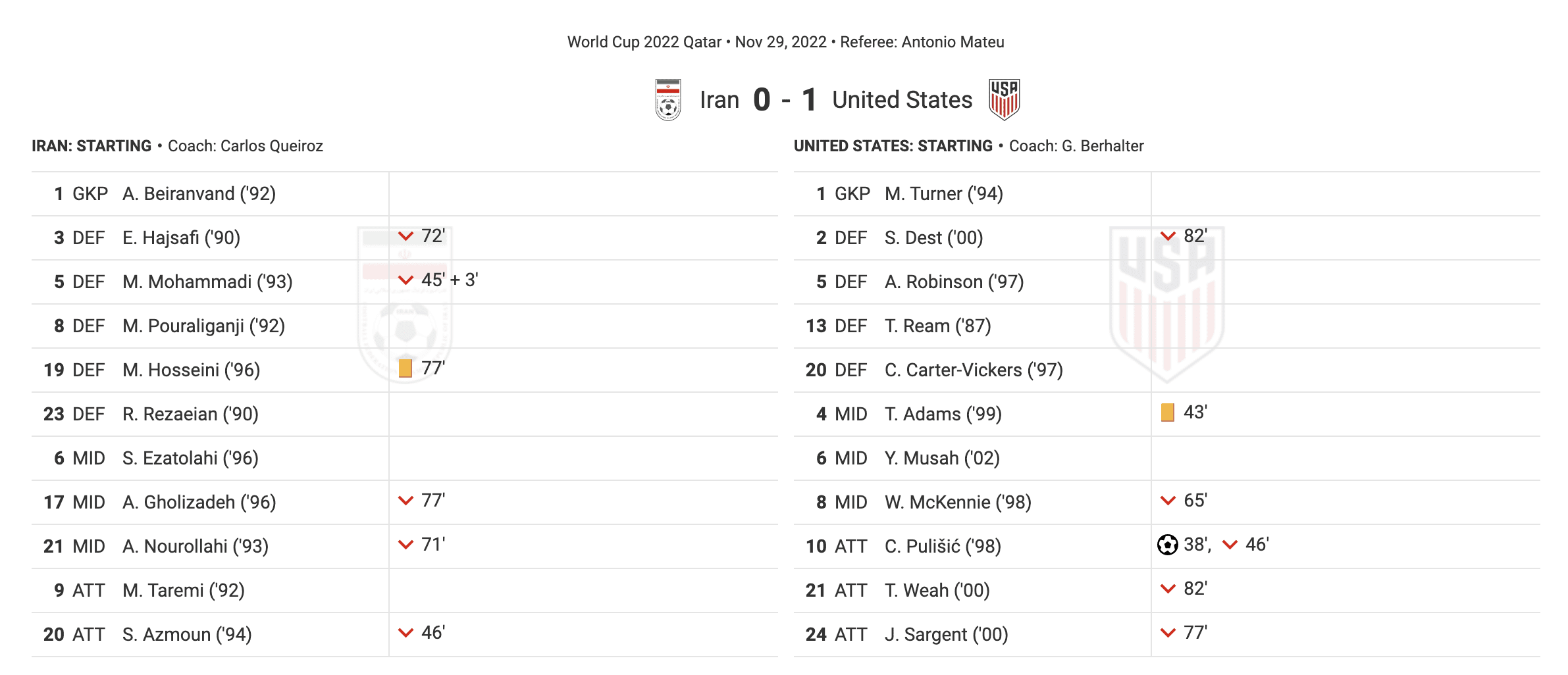
Carlos Queiroz made only one change from the lineup that beat Wales 2-0 in matchday two, with usual starting goalkeeper Alireza Beiranvand coming back into the fold, replacing Hossein Hosseini. This meant that Milad Mohammadi, Morteza Pouraliganji, Majid Hosseini, and Ramin Rezaeian made up the back four. Further forward, Ahmad Nourollahi partnered Saied Ezatolahi in central midfield, with Ehsan Hajsafi and Ali Gholizadeh starting on the flanks. Completing the starting XI was the usual strike partnership of Sardar Azmoun and Porto’s Medhi Taremi.
Gregg Berhalter made two changes to the United States squad that drew 0-0 with England on matchday two. In the US’s 4-3-3 setup, Arsenal‘s Matt Turner continued in goal, with Antonee Robinson and Sergiño Dest as the two fullbacks. Central defence is where the first change occurred, with Celtic‘s Cameron Carter-Vickers starting alongside Tim Ream, replacing Walker Zimmerman. In midfield, Yunus Musah played alongside Tyler Adams and Juventus star Weston McKennie. Moving into the attack, Christian Pulisic and Tim Weah started on the wings, with Norwich’s Josh Sargent coming back into the starting XI, replacing Haji Wright.
The United States’ attacking rotations, and the quality of the fullbacks in attack
Being that the United States needed a win, naturally, they were very attack-minded from the opening whistle. However, with that being said, Berhalter did not opt to just send people forward with no real idea of how to attack the Iranian defence. The quality that the US possessed when it came to attacking rotations was almost perfect, and it played a large part in their success going forward and being able to create chances in the final third.
These attacking rotations were able to confuse the Iran defence at times, with it opening up pockets of space in advanced positions for the United States attackers to move into and become passing options, with them being able to advance the ball forward through the stubborn Iran defensive shape.
That is not the only thing that the United States did well going forward. They were able to get quality delivery from the fullbacks, with the attacking quality of both Antonee Robinson and Sergiño Dest really shining through. Both fullbacks sent multiple great crosses into the box from these wide attacking positions, which resulted in goalscoring chances for the United States attackers.
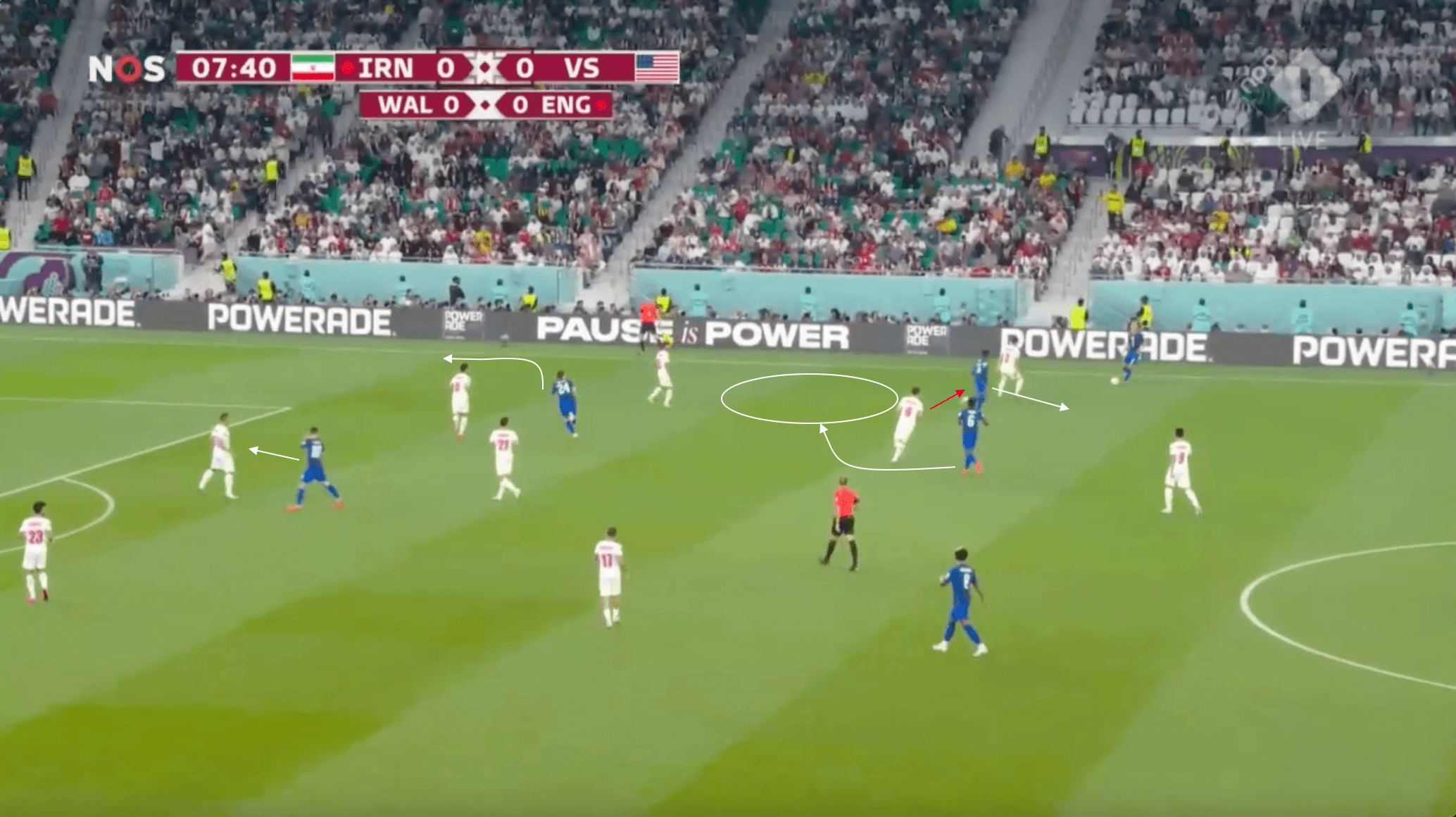
The image above shows one example of these attacking rotations, and how they created space going forward for the United States. In this phase of play, the ball is in possession of the fullback Dest, with the Iran defenders holding firm in their defensive shape. Tim Weah drops deeper into midfield to present himself as a passing option, with Josh Sargent making a run to occupy the wide space that Weah was previously operating in. When Weah drops into this deeper position, the Iran midfielder tracks him, leaving a pocket of space in the half-space for Musah to move into. The American midfielder does just that, presenting himself as an option for a pass.
This was a useful strategy for the United States throughout this match, with a good amount of their attacking moves advancing as a result of these attacking rotations from the Americans when they had possession and advanced into the attacking third of the pitch.
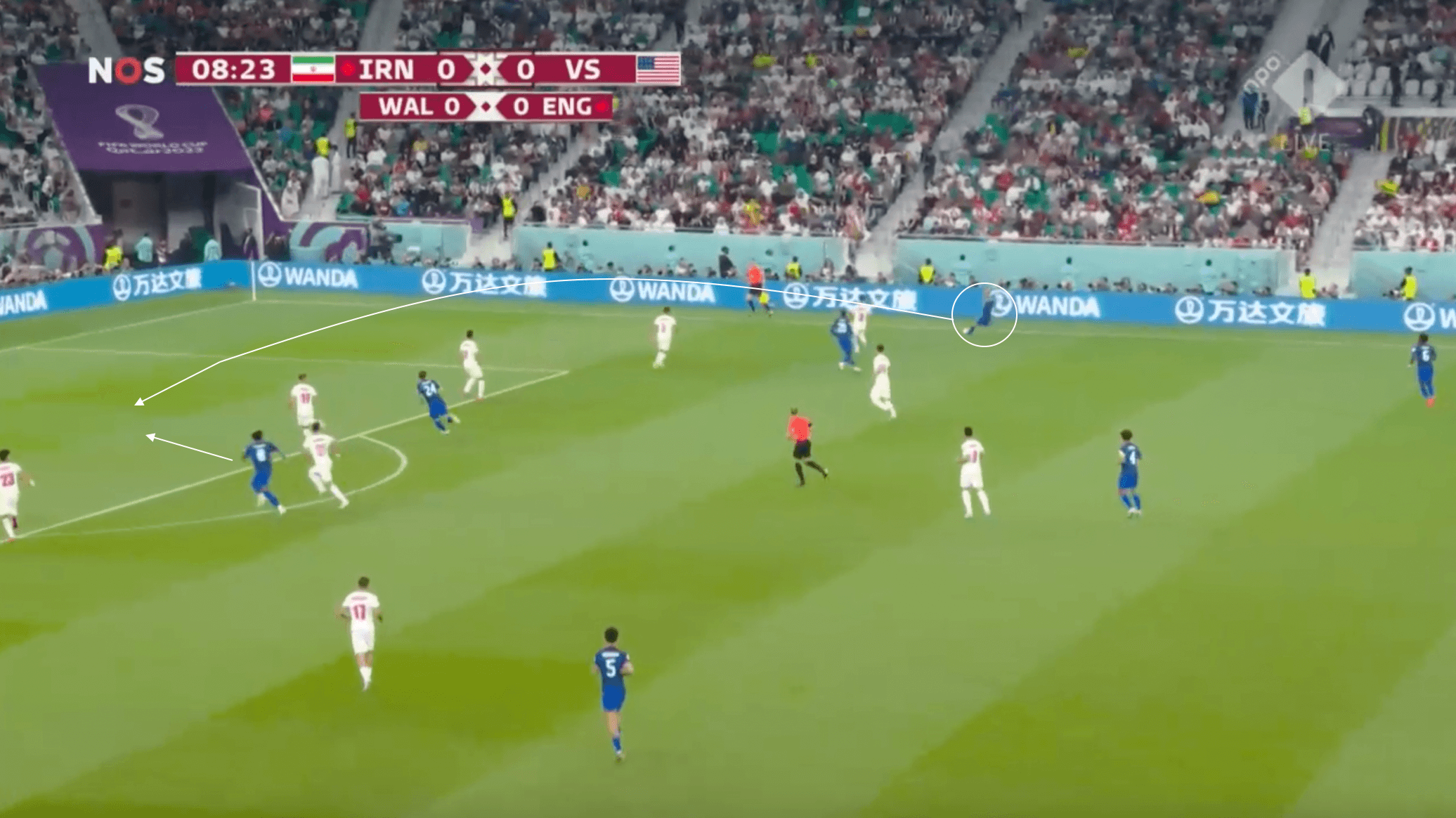
When it came to progressing attacking moves for the United States, the deliveries of the fullbacks into the box were also key for the American’s success going forward. The crossing abilities of both Antonee Robinson and Sergiño Dest were on full display in this match, and the phase of play above shows one example of this to try and find the space in behind the defence.
With Iran sitting in a low defensive block, there are no options for the fullback to play the ball short. Weston McKennie is able to make a late run into the penalty box, finding space in between Iran’s central defenders. The ensuing cross from Dest is perfectly placed, but the goalkeeper reacts quickly enough to parry the ball away from danger.
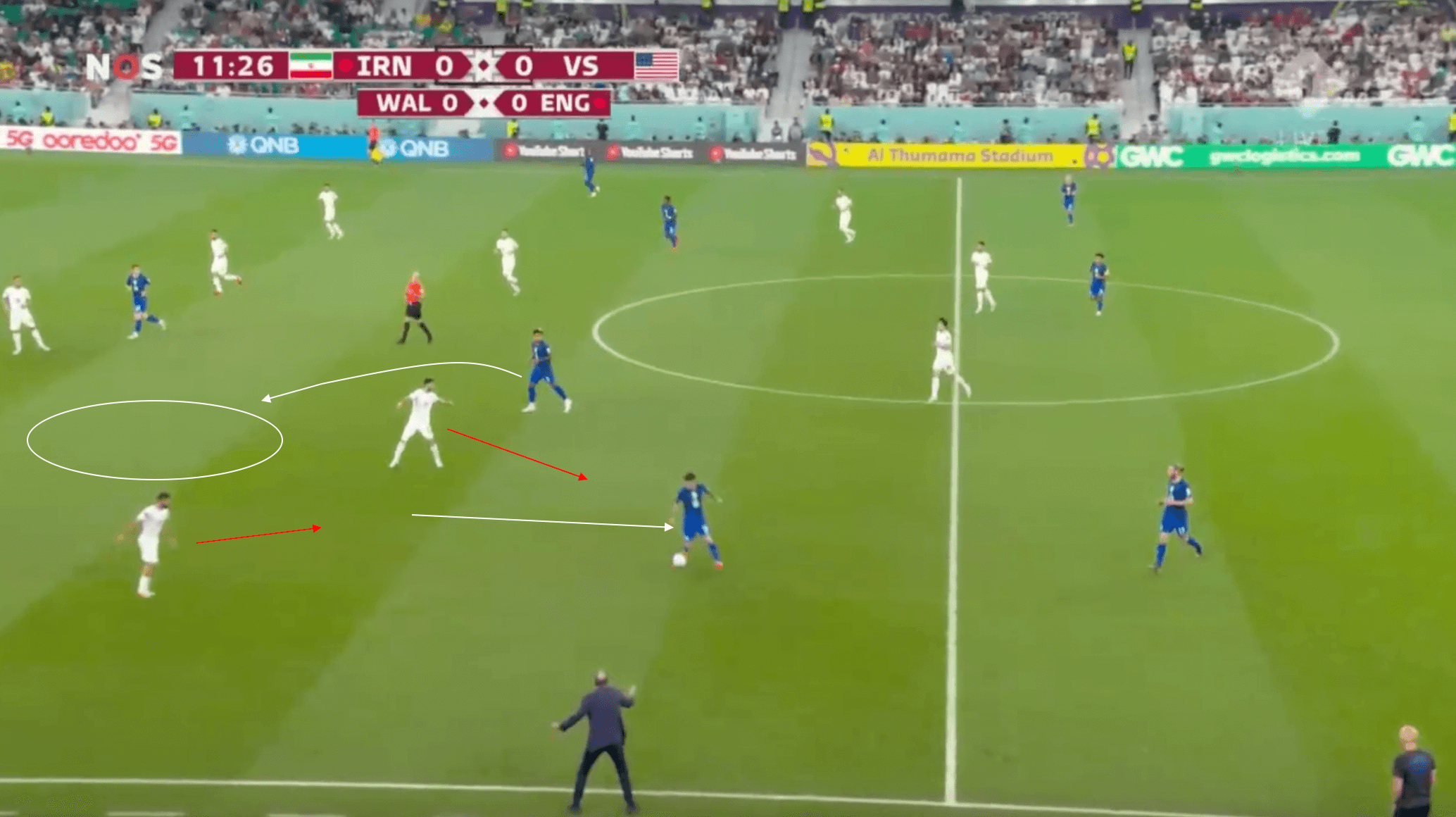
The image above shows another example of the attacking rotations utilised by the United States to create openings in the half spaces to progress the ball forward. In the phase of play above, Christian Pulisic has dropped deeper into midfield to receive possession, almost dropping into a left-back position. This movement attracts the attention of both of the Iran midfielders in close proximity to Pulisic, which frees up the movement of McKennie.
As a result, McKennie is able to move off the back shoulder of the midfielder and into the vacant half space, freeing himself up as an option going forward to try and break through the staunch Iran defensive shape. While the ball is not played to the Juventus midfielder, this attacking moment again shows the types of rotations the United States were looking to utilise to exploit the Iran low block.
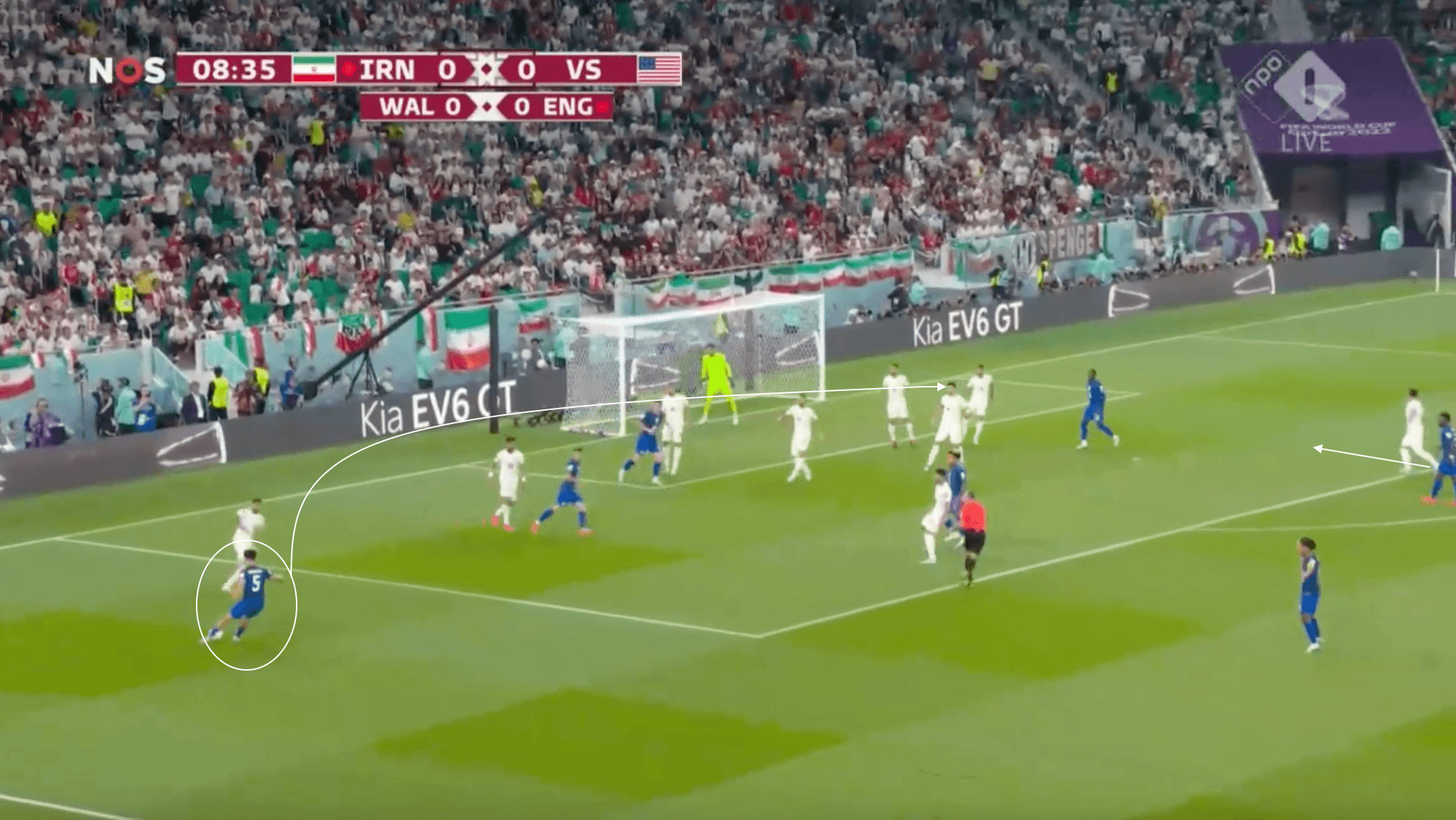
The phase of play above shows another example of the fullback’s crossing ability leading to a chance for the US. Robinson’s cross is whipped into a dangerous area, which forces the Iran defender into a clearance. However, it falls to Musah, who has found himself in a favourable position on the edge of the penalty box. His ensuing shot is hit well over the bar, but it again shows the involvement of the two fullbacks going forward for the United States in this match.
As this section has shown, the United States looked to bring the game to Iran from the first whistle, with them constantly attacking and creating chances using crosses from wide positions and the movements and rotations of the attackers to get the winning goal, as well as constantly being a threat going forward.
Iran’s compact defensive structure
Even though the Iranians were not victorious, and were knocked out of the World Cup as a result of this defeat, they can still hold their heads up high in regard to their defensive performance. Under constant pressure from the start of the match, they were able to withstand wave after wave of American pressure, and even after conceding the goal, they still were strong defensively.
Carlos Queiroz set up his defensive unit in a 4-4-2 low block, with the midfield and defensive lines being tight and compact, trying to close down the central areas and force the Americans to either play the ball backwards or into the wide channels. Iran looked to quickly close down the US players when they received possession, forcing them into either an errant pass or a poor first touch which resulted in a turnover of possession. This section will highlight Iran’s compact defensive structure in more detail.
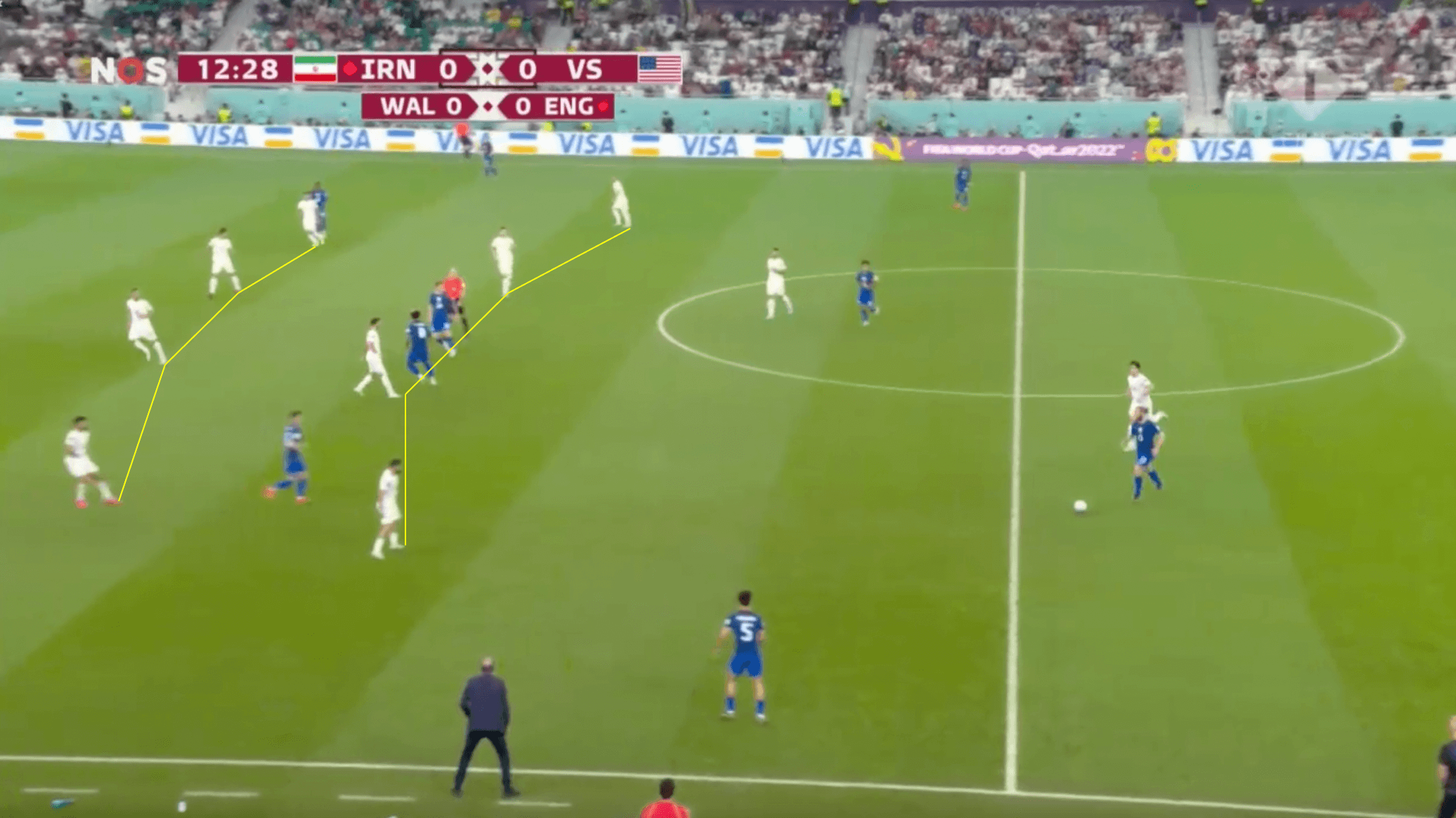
The image above shows the defensive shape that Queiroz opted for in this match against the United States. Iran sat in a compact 4-4-2, with the midfield and defensive lines staying narrow and close together, essentially trying to eliminate passes into the central half spaces and through the midfield. They allowed the United States to play the ball out wide, as it was not a direct threat to their goal, as well as it allowed them to drop off and get set up defensively inside the penalty box.
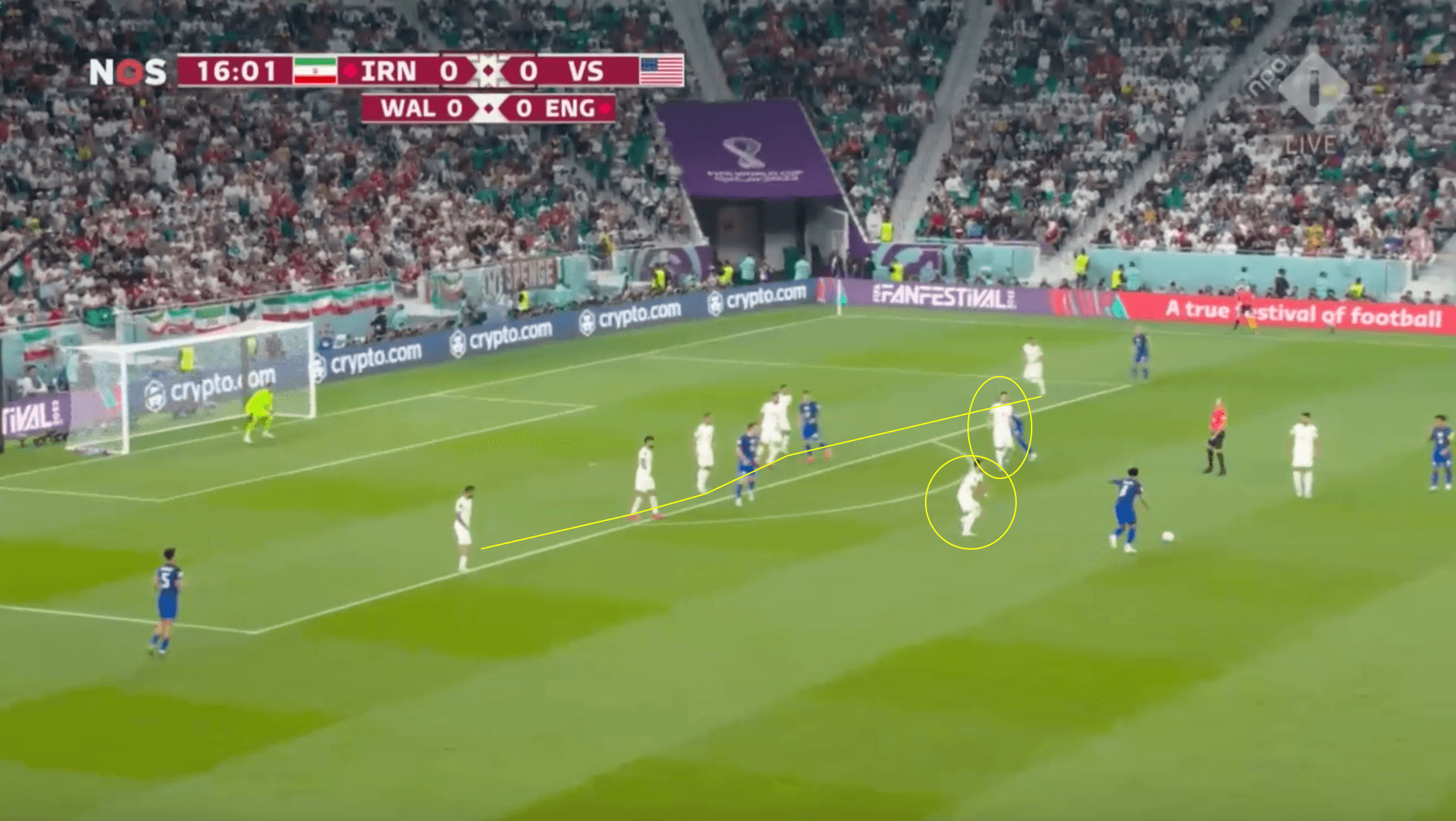
The phase of play above shows what Iran looked to do when the United States advanced all the way to their penalty box. The Iranian defenders are back in a line of six, outnumbering the US players 6-2 inside the penalty area. They also stay tight and narrow, allowing the space wide, but making sure the central areas are totally cut off and congested. As a result, McKennie is forced to try and play a ball over the top, which has to be perfect if it is to work. The ensuing ball over the top from McKennie is not perfect, which allows the Iranian defender to head the ball away from danger and reset his back line.
This constant ability for Iran to close off these central areas to the United States really frustrated the American players, with hopeless balls played over the top at moments in this match to try and break through their resolute defence.
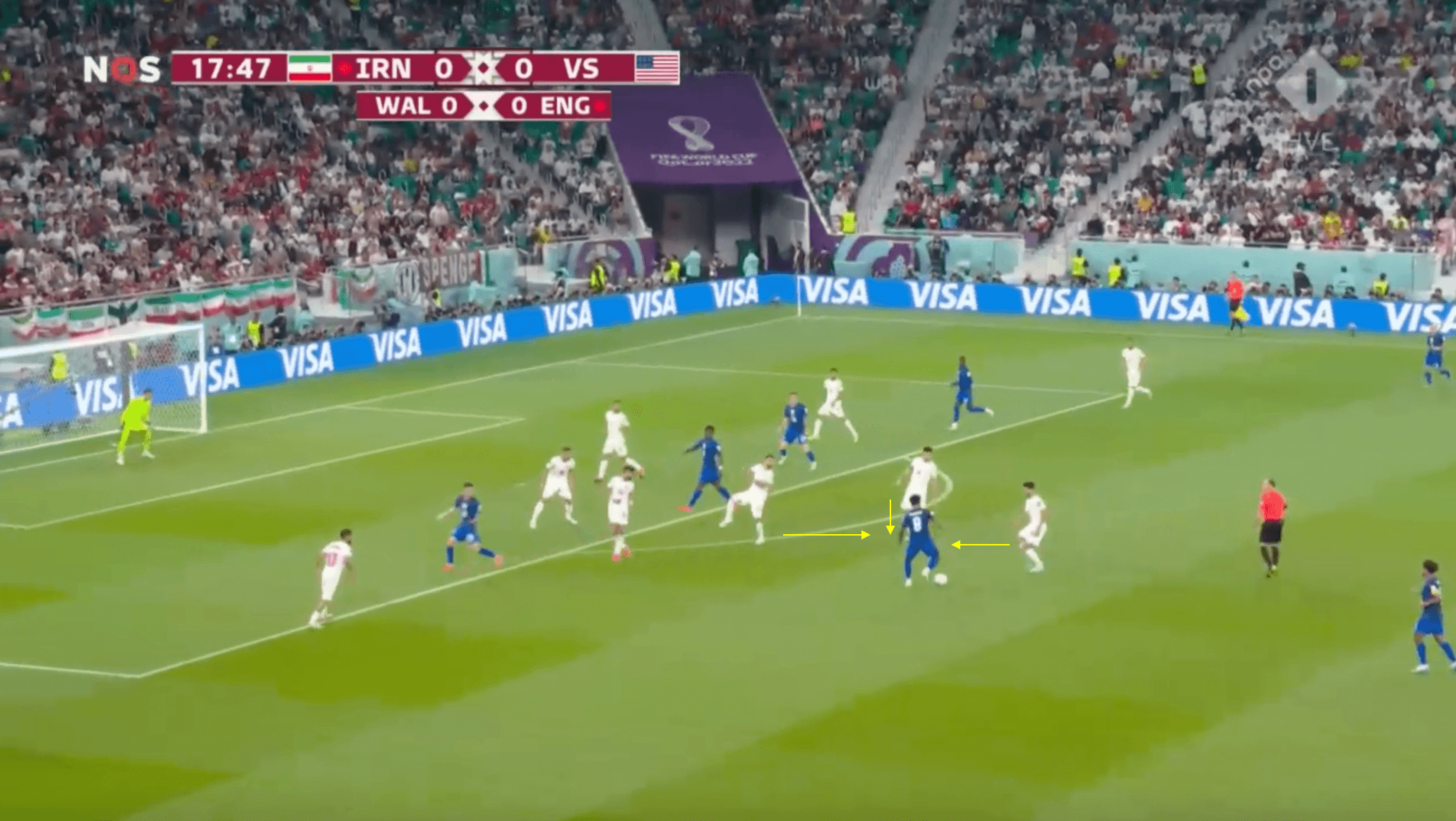
Again, this image shows the tendency for Iran to drop off and defend with plenty of numbers behind the ball. In the specific phase of play above, nine of the ten outfield players are defending for Iran, with no passing options on for McKennie to play forward to in advanced positions. He hesitates on the ball, which allows the nearby Iran players to swarm and win possession back, forcing the United States to reset.
As this section has shown, the defensive solidity of Iran kept them in with a chance of qualification all the way to the very end of this match, and while they did not get the result they wanted, the defensive performance is one to be happy about.
Conclusion
In the end, Gregg Berhalter and the United States are through to the round of 16 of the FIFA World Cup, with Iran left wondering what possibly could have been. While Carlos Queiroz’s tactics of defending deep and compact were for the most part successful, as this analysis has shown, the United States was able to find a way to victory. With clever attacking rotations to open up space centrally in the half spaces, as well as very good attacking wingback play, the United States were able to come away with the 1-0 win.

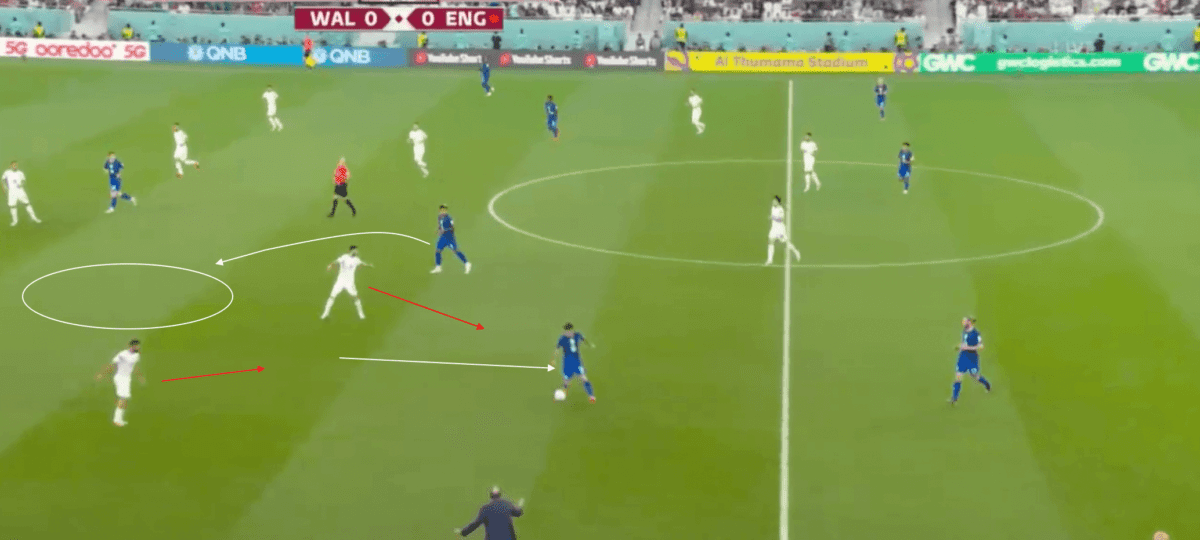



Comments